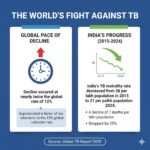Mission Shakti Scheme: Basics Explained

Ministry of Women and Child Development has issued detailed guidelines for ‘Mission Shakti’ scheme. The Government of India has launched ‘Mission Shakti’ – an integrated women empowerment programme as umbrella scheme for the safety, security and empowerment of women for implementation during the 15th Finance Commission period 202l-22 to 2025-26. The norms of ‘Mission Shakti’ will be applicable with effect from 01.04.2022.
‘Mission Shakti’ is a scheme in mission mode aimed at strengthening interventions for women safety, security and empowerment. It seeks to realise the Government’s commitment for “women-led development‟ by addressing issues affecting women on a life-cycle continuum basis and by making them equal partners in nation-building through convergence and citizen-ownership.
The scheme seeks to make women economically empowered, exercising free choice over their minds and bodies in an atmosphere free from violence and threat. It also seeks to reduce the care burden on women and increase female labour force participation by promoting skill development, capacity building, financial literacy, access to micro-credit etc.
‘Mission Shakti’ has two sub-schemes – ‘Sambal’ and ‘Samarthya’. While the “Sambal” sub-scheme is for safety and security of women; The components of ‘Sambal’ sub-scheme consist of erstwhile schemes of One Stop Centre (OSC), Women Helpline (WHL), Beti Bachao Beti Padhao (BBBP) with a new component of Nari Adalats – women’s collectives to promote and facilitate alternative dispute resolution and gender justice in society and within families.
the “Samarthya” sub-scheme is for empowerment of women;
The components of ‘Samarthya’ sub-scheme consist of erstwhile schemes of Ujjwala, Swadhar Greh and Working Women Hostel have been included with modifications. In addition, the existing schemes of National Creche Scheme for children of working mothers and Pradhan Mantri Matru Vandana Yojana (PMMVY) under umbrella ICDS have now been included in Samarthya. A new component of Gap Funding for Economic Empowerment has also been added in the Samarthya Scheme.
According to the guidelines, the ministry has now targeted improvement in the Sex Ratio at Birth (SRB) by 2 points every year, improvement in the percentage of institutional deliveries at 95% or above, 1% increase in 1st Trimester ANC Registration per year, 1 per cent increase in enrolment at secondary education level and skilling of girls and women per year, to check dropout rate among girls at secondary and higher secondary levels and raising awareness about safe menstrual hygiene management.
The scheme will also look at increasing girls’ participation in sports by identifying talent and linking them with appropriate authorities under ‘Khelo India’.
The ministry also plans to strengthen One-Stop Centres (OSCs), set up to help women facing violence, including domestic violence and trafficking, by adding 300 OSCs in districts which either have a high rate of crimes against women or are geographically large, preferably in aspirational districts.
The OSCs will be the mainstay of the ministry at the district level for coordination and convergence with other initiatives under Nirbhaya Fund — such as women’s helplines, Anti-Human Trafficking Units, women’s help desks, and special fast-track courts, District Legal Service Authority, etc.
Women in need, including those affected by violence along with their children — girls of all ages and boys up to 12 years — can take temporary shelter at the OSCs for up to five days. For long-term shelter, arrangements will be made by OSCs in coordination with Shakti Sadan, according to the guidelines.
The toll-free, 24-hour women’s helpline, 181, will be merged with the Emergency Response Support System, and other platforms such as 1098 child line and NALSA, will also be connected to OSCs.






0 Comments